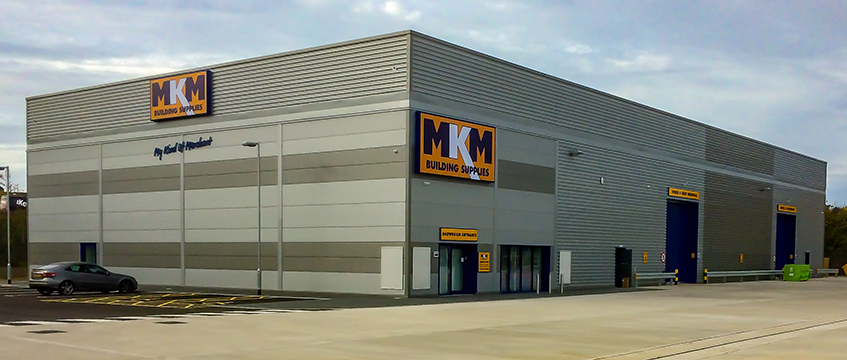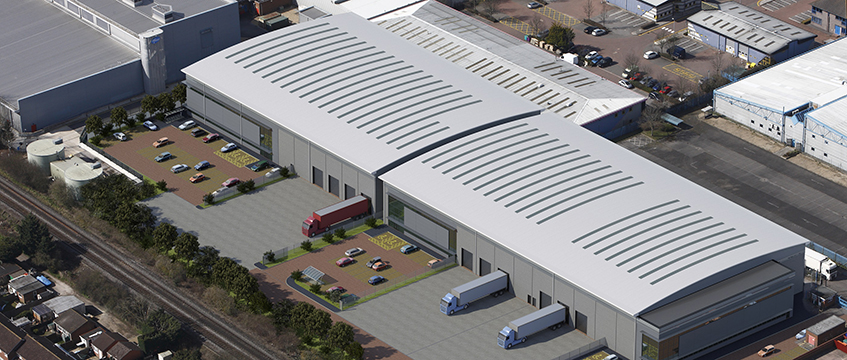As you cross the River Severn you pay a tax to enter Wales. The bridge spanning the divide between England and Wales has a toll – but only for those driving west. For £20, a lorry can make the journey across the river and find very little warehouse stock. Is it worth the cash? Probably not.
But an industrial opportunity is starting to bubble on the Welsh side of the river. In September, a 282,297 sq ft former Tesco distribution centre in Chepstow was let to logistics firm CM Downton. It was one of the biggest industrial deals of the year in Wales, and possibly the first of many in Chepstow.
Why? Because the toll on the Severn Bridge, which leads to the town, will be cut to £16.70 in January and removed all together by the end of 2018. Suddenly, if you have a massive warehouse in Wales, your lorry drivers won’t need to relinquish a twenty on each and every roundtrip to England.
Rob Cleeves, director of industrial and logistics in the south west at Savills, says: “By removing those tolls, you’re effectively creating locations, such as Chepstow, which will be in competition with sites in and around Bristol.”
Shed availability is in a “dire position” in the area, Cleeves says, pointing to the WA248 building in Bristol as the only industrial site of more than 200,000 sq ft still available. The next closest is in Llantrisant in South Wales – more than 50 miles away. If Chepstow opens up, occupiers will have more options at lower rental levels.
Like Portbury, west of Bristol, Chepstow is 28 miles from the M4/M5 interchange, giving it easy access to large swathes of England. Unlike Portbury, average industrial rent is between £3.50 and £4.50 – compared to the low- to mid-£5 region. “There’s a significant saving there on a building of 200,000 sq ft,” Cleeves says.
Chepstow reflects a growing sense from both industrial owners and occupiers that today’s hotspots are too hot to dip your toes into. Rent is starting to pummel occupiers’ balance sheets, while land availability in key areas is so low developers need to step out of their comfort zones.
Cambridge hots up
While Chepstow still has a dark question mark looming over it as it waits for the toll to disappear, Cambridge is well on its way to opening up new areas for industrial.
Cambridge is desperate. City centre rents for research and development space are more than £10 per sq ft, while building merchants and other trade sectors pay up to £16.
Phil Ridoutt, director of industrial agency in Cambridge at Savills, says: “Land supply is very restrictive, particularly in the city centre of Cambridge. Most land that does come forward inevitably ends up going to high value uses, including residential or office, lab and science park use.
“What this has resulted in is a number of these more traditional industrial users looking to the wider Cambridge area.”
The last decade has seen no significant speculative developments in the area, but in 2018 alone, the wider Cambridge region will deliver more than 300,000 sq ft of industrial space.
The first speculative development in over a decade, the 155,000 sq ft Buckingway Business Park nine miles north of the city off the A14, will complete in February. With four warehouses between 25,000 and 50,000 sq ft, quoting rents are £8.95 per sq ft at the M&G funded scheme – far less than in the city centre.
In Cambridge South, developer Salmon Harvester is constructing 70,000 sq ft of space across 13 units, while Rockspring and XLB are going to deliver 76,000 sq ft at Cambridge Research Park.
For an outsider, that might not seem significant, Ridoutt says, considering 300,000 sq ft is the size of one large warehouse in the Midlands’ Golden Triangle. However, it means 26 new business units for Cambridge – a relatively small city with a population of less than 130,000 – and further growth down the line.
“The next step will be the cities that immediately service Cambridge. There will be a big spin-off running up and down the M11, A14 and A10 corridors.”
Harlow aims high
With London on one side and Cambridge on the other, places like Harlow can expect to catch the eye of both developers and occupiers. “As stock diminishes, occupiers are being forced to consider value alternatives to North London,” says Ivan Scott, divisional partner at Glenny.
Harlow offers a 30% discount on North London’s £12 per sq ft rents. That is why, Scott says, investors have taken the opportunity to develop the 97,000 sq ft East Park by Chancerygate and the 44-acre Connex Park by Mulberry Developments.
With Harlow already active, the next step is going north of Stansted Airport, Ridoutt says. A connection with the M11, spreading development from Cambridge and historic development lag mean it is in a prime position to become an industrial hotspot.
A developer’s perspective
Michael Gibbons, founder of Taurus Developments
Why develop in non-core locations?
“Supply is very tight. A lot of investors can’t get value from buying up-and-let investments. They’re looking more and more at development opportunities to get value. It is only relatively recently that developers and funds have taken the plunge to start building speculatively.
“There are locations that people will look at now from an occupational point of view and, therefore, from an investment point of view, and that creates development opportunities for people like Taurus.”
Key project

Haverhill Business Park, in partnership with Hammond Rutts – 27 acres with units between 2,500 and 265,000 sq ft planned; 17 miles southeast of Cambridge and 15 miles from the M11; 20,000 sq ft pre-let to MKM Building Supplies on a 20 year lease
Why Haverhill?
“Haverhill should attract occupiers who can’t be satisfied in Cambridge itself. To purchase 27 acres in May 2015 within an established business park in that location really was a good thing. When you’ve got scale you can really go places. There’s upward pressure on rent, which was historically £5 per sq ft but we achieved over £8 per sq ft with MKM.”
Key project

Velocity, Havant, in partnership with LaSalle Investment Management – three units between 26,000 and 45,000 sq ft; construction scheduled for early 2018
Why Havant?
Velocity will be the only speculatively developed scheme in Havant, which sits at the end of the M27. Latent demand and a lack of stock are leading to upward pressure on rental levels in what is a strong local market with a history of industrial space.
How do you find land in a constricted market?
“Generally, you’ll be looking at situations like we did where we bought a brownfield site that had a building on it. We demolished the building, got planning, and now we’ll be developing the site.”
West Shed Story
The Sharks and Jets have nothing on sheds and resi. A conflict is brewing between the two – a conflict Bill Page, business space research manager at Legal & General, says is “coming to a big town near you”.
Over the past 20 years, a fifth of industrial space in London has been converted to residential. This is understandable – housing shortages in the South East are severe and high-profile (“more high profile than poor industrial will ever seek to be in the national mind-set”, Page says).
On top of this, permitted development rights were extended to light industrial at the start of October. There is already an influx of deals and applications for residential use, according to EG data. In the South East, there is more than 250,000 sq ft of available industrial space, closely followed by the North West with 247,000 sq ft.
The problem is that as residential demand grows across UK cities, so does demand for online shopping, which in turn drives up demand for industrial space in urban areas, close to the end user. According to Cushman & Wakefield, London’s demand for urban logistics, for example, will rise 42% to 1.2m sq ft by 2021. In other words, the last-mile hotspots of today will have to remain the hotspots of tomorrow.
The only solution is to intensify land use, bringing together the two rivals into one space. Travis Perkins is already on the hunt for joint venture partners to develop a mixed-use residential portfolio across its London retail estate, with two completed developments already in the city.
Len Rosso, head of industrial at Colliers International, says: “If you live in London, you live on top of a railway station, a bus station, casinos, offices. You live on top of lots of things, which are not viewed as desirable opportunities. But in London that’s accepted as a norm, so I think that will be accepted elsewhere.”
Whether or not that is immediately accepted by the public, developers must accept that the next step in fixing the shortage is striking up resi partnerships across the UK.
Highway to sell
Your next development needs connectivity. Here is where you could be looking if the M1 and M4 have run out of space:
■ M11 A connection with Cambridge is an obvious benefit, but the creation of Junction 7a north of Harlow means that area – where most of the town’s employment stock is – will open up in the next five years.
■ M40 The M1 is always congested, so why not look at the M40? Rui Nobre, chief executive of Griffen, says that since his company bought the Wellesbourne Distribution Park in 2015 to avoid congestion, rents have risen from “the mid-£4s to early-£6s”.
■ A11 A new dual-carriageway along the A11 means the road is “more important than ever”, according to Philip Woolner, joint managing partner at Cheffins. It has opened up new potential locations around Thetford, Newmarket and Mildenhall.











